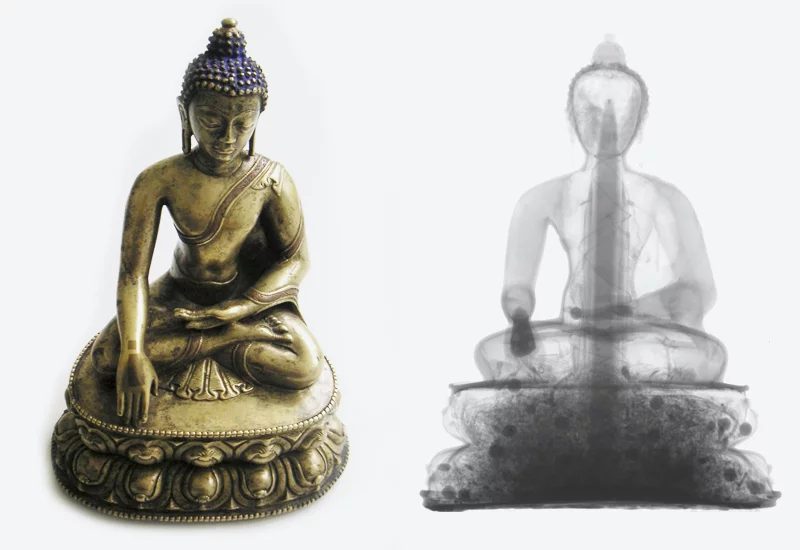Overview article
The characteristics and capabilities of neutrons
The particular insights given by neutrons, and the way in which these insights depend on the special physical characteristics of the neutrons, will be outlined briefly below.
The neutron: Particle and wave
The crucial characteristics for most experiments using neutrons is that they behave like particles as well as waves, in accordance with the principles of quantum physics. Most neutron scattering experiments use interference phenomena, which occur when a number of waves are superimposed upon each other.
Neutrons show structure
A neutron can therefore be assigned a wavelength. The fact that this is usually approximately the same length as the structure under investigation is what enables scattering experiments to work and the determination to be made of structures much too small to be observed under a normal microscope. Investigations using neutrons are often complemented by studies using other probes, such as X-rays, since the different probes make different atoms visible.
Neutrons show motion
Neutrons can also be used to investigate dynamic processes inside a solid – for example, when atoms in a crystal lattice oscillate out of phase. In this kind of experiment, a beam of neutrons is passed at a specific speed through a sample and measurements are taken to determine how that speed – and therefore the kinetic energy – has changed as a result of interaction with the sample. The change of energy of the neutrons then corresponds to the energy of a possible motion in the solid being examined.
Neutrons show magnetism
The atoms in many materials carry a magnetic moment – in a sense, they act like tiny bar magnets and their arrangement determines the magnetic properties of the material. Neutrons provide information about this magnetic structure because they themselves also carry a magnetic moment, and they can therefore act like miniature compass needles, gathering information about the magnetic structure along their way through the sample.
Neutrons penetrate deeply
As one of the few microscopic probes, neutrons penetrate deeply into materials, and can thus give evidence of structures deep within the bodies of solids or liquids. This is because neutrons do not have an electric charge; and they therefore essentially only interact with the atomic nuclei of the material under investigation, not with the electrons that fill most of the space within matter.
Neutrons depict hydrogen
Hydrogen atoms are almost invisible to X-rays. In contrast, neutrons can show hydrogen very clearly. This is important for the investigation of biological materials, as well as for imaging processes, where water and organic substances can be revealed clearly, even behind a thick metal housing.
Neutrons as the object of investigation
At PSI, neutrons are also the subject of research as well as being research tools. The search for the electric dipole moment of the neutron should contribute further insights into the Standard Model of particle physics.
Additional Information
- Research with neutrons
Neutron research – an overview - Spallation Source SINQ
Producing neutrons at PSI - Experiments using neutrons
Two typical neutron experiments

